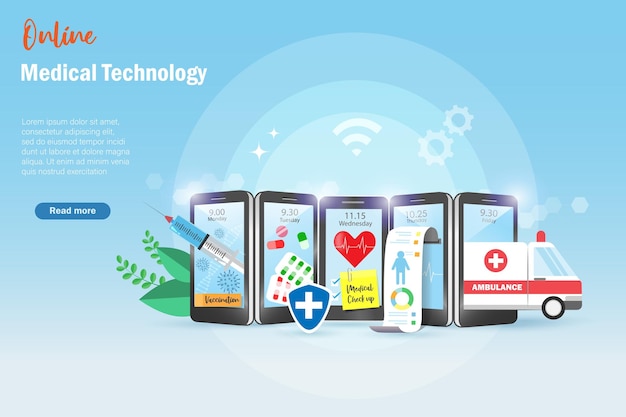Exploring the Growth of Subscription Based Healthcare in the Digital Age
Exploring the Growth of Subscription Based Healthcare in the Digital Age
Blog Article
Exactly How Subscription-Based Medical Care Is Reinventing the Clinical Market

The Increase of Membership Health Care
In recent times, the medical care sector has actually observed a significant shift towards subscription-based models, reflecting broader consumer trends favoring comfort and predictability. This makeover is driven by the increasing demand for more personalized and available care solutions. Registration healthcare, sometimes referred to as attendant medication or direct medical care, offers patients a set month-to-month charge for a variety of medical services, significantly altering typical fee-for-service versions.
The surge of subscription health care is promoted by developments in modern technology, which make it possible for structured interaction between carriers and individuals - subscription based healthcare. Digital platforms and telehealth solutions have actually become essential, supplying clients the ability to schedule appointments, access medical documents, and obtain assessments online. This technological combination not only improves person engagement however additionally enables providers to supply extra efficient care
Moreover, the registration design lines up with the evolving expectations of people that look for more control over their healthcare expenditures and experiences. While this model is getting grip, its proliferation encounters difficulties such as governing obstacles and the requirement for more comprehensive approval within the traditional healthcare ecological community.
Advantages for Suppliers and individuals
Subscription-based healthcare provides a wide range of benefits for both service providers and clients, reshaping the characteristics of healthcare. For people, this version gives boosted accessibility to health care services. With a predictable regular monthly charge, clients can enjoy endless assessments, decreased wait times, and individualized care. This plan often causes a more positive method to health monitoring, enabling prompt interventions that can prevent persistent conditions from escalating. The economic openness of membership versions lowers the unpredictability associated with standard fee-for-service payment, minimizing the problem of unexpected clinical expenditures.
For medical care suppliers, subscription-based designs foster an even more satisfying and lasting practice. Management tasks are frequently structured, minimizing overhead prices and allowing providers to commit more time to person interaction. Overall, subscription-based health care aligns the motivations of service providers and individuals, advertising an extra reliable and patient-centered health care shipment system.
Trick Attributes of the Design
Frequently, the vital features of the subscription-based health care design emphasize its distinct method to supplying clinical solutions. Central to this model is the idea of foreseeable, month-to-month payments, offering patients a detailed variety of services without the unpredictability of conventional fee-for-service frameworks. This version often includes limitless access to medical care solutions, preventative treatment, and regular exams, ensuring that clients can engage with their doctor proactively as opposed to reactively.
Additionally, straight interaction networks, such as telemedicine get more and messaging systems, are stressed, permitting people to obtain timely guidance and examinations without needing in-person visits. This enhances ease of access and benefit, particularly for individuals with mobility restraints or those staying in remote locations. The version likewise fosters stronger doctor-patient relationships, as healthcare service providers are incentivized to concentrate on long-term health end results as opposed to short-term check outs.
Furthermore, subscription-based healthcare often incorporates technical developments, such as electronic wellness documents and health surveillance applications, to offer reliable and customized care. Individuals benefit from coordinated and continual care administration, which is tailored to their details wellness needs. Inevitably, these functions jointly produce a patient-centered healthcare experience, focusing on accessibility, price transparency, and preventative care.

Obstacles and Factors To Consider
While the subscription-based medical care design offers many advantages, it is not without its challenges and factors to consider. One considerable challenge is ensuring fair access. Registration models might unintentionally prefer those with higher socioeconomic standing, potentially expanding disparities in medical care access for lower-income individuals that may fight with regular monthly charges. This increases moral issues concerning inclusivity and equity in healthcare distribution.
An additional obstacle hinges on regulative conformity. Subscription-based medical care must navigate a complex web of guidelines that differ by area, consisting of issues around client privacy, information defense, and state licensing needs. Guaranteeing conformity without restraining the model's flexibility and advancement can be discouraging for suppliers.
In addition, there is the threat of overutilization or underutilization of solutions. People paying a fixed fee might overuse solutions, leading to increased operational expenses, while others may underutilize because of fear of burdening the my response system, potentially overlooking required care.
Future Potential Customers and Innovations
The landscape of subscription-based health care is poised for change with arising developments and progressing potential customers. As innovation continues to advance, the integration of fabricated knowledge and maker discovering provides significant possibilities to boost diagnostic accuracy and simplify individual administration. Predictive analytics can revolutionize preventative care by identifying possible wellness dangers before they manifest, thereby lowering both expenses and the burden on medical care systems.
Additionally, telemedicine is set to increase within subscription versions, offering clients increased accessibility to healthcare specialists regardless of geographical restraints. This not only promotes continuity of treatment but additionally empowers individuals to engage even more proactively in their health and wellness monitoring. Furthermore, blockchain modern technology provides possible in securing individual data and making sure interoperability across platforms, cultivating trust and openness.
The development of individualized medication is one more frontier, with registration models supplying an unique framework for providing customized health options. Hereditary screening and personalized therapy plans can be perfectly incorporated, straightening patient requires with specific clinical interventions. Partnerships between tech business and health care suppliers are most likely to generate cutting-edge solutions, enhancing patient experiences and outcomes. As these prospects materialize, subscription-based healthcare has the potential to redefine how care is delivered and accessed.
Conclusion
Subscription-based healthcare is changing the clinical market by providing a more accessible, foreseeable, and patient-centered technique to medical services. This version boosts patient-provider connections, guarantees financial openness, and highlights preventive treatment with unlimited consultations and telemedicine. Regardless of difficulties such as regulative difficulties and possible disparities in access, the membership design holds guarantee for a more tailored and effective health care experience. As technology breakthroughs, additionally developments are most likely to deal see this page with existing obstacles and enhance health care delivery.
Subscription healthcare, occasionally referred to as attendant medicine or direct main treatment, supplies patients a fixed regular monthly cost for a range of medical services, dramatically altering conventional fee-for-service designs.
In addition, the registration model lines up with the progressing assumptions of patients who look for even more control over their healthcare expenses and experiences. For patients, this design supplies improved access to health care solutions. On the whole, subscription-based medical care aligns the incentives of individuals and suppliers, advertising an extra patient-centered and reliable health care distribution system.
Additionally, telemedicine is established to broaden within membership designs, offering clients enhanced access to healthcare professionals no matter of geographical restraints. - subscription based healthcare
Report this page